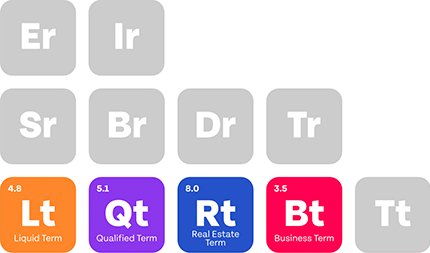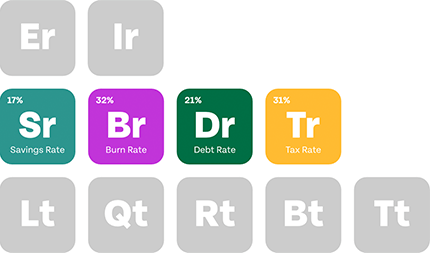When running a private practice, you’ll eventually need to bring in outside help.
These physicians who work locum tenens may come in temporarily or for a longer period, and you’ll have to grapple with how to bill for services provided by them.
This article explains what you must know about locum tenens billing, including the restrictions and requirements your temporary physicians must meet.
Key Takeaways
- Replacement locum tenens physicians temporarily cover absent regular staff, limited to 60 days.
- Supplemental locum physicians help expand your practice by providing additional support.
- Proper Medicare credentialing and accurate record-keeping are critical for successful billing.
- Using the correct forms, modifiers, and billing identifiers ensures compliance and payment accuracy.
Table of Contents
Replacement vs. Supplemental Locum Tenens Services – Knowing the Difference
To bill for locum tenens services, you must first understand the categories of services substitute physicians can provide.
There are two types of locum tenens doctors mentioned in the Medicare Claims Processing Manual: those who render replacement and supplemental locum physician services.
Replacement Services
Replacement locum tenens physicians fill in for regular physicians at your practice when they’re unavailable.
A common instance in which it becomes necessary to hire a locum doctor may be when a regular staff member takes paid, sick, or maternity/paternity leave. According to the manual, replacement locum physicians can work in this role for no longer than 60 days.
Supplemental Services
In contrast, the CMS considers supplemental services provided by locum tenens physicians to be work performed by a staff member.
In other words, these physicians come in to supplement, or work with, your current personnel, not replace them temporarily. An example of a situation where you can bill for supplemental services to medicare patients is when you’re trying to grow your practice and need more personnel.
Billing for Services Rendered When You Use Locum Staff – What You Must Know
The Medicare Claims Processing Manual lays out the factors you must consider when billing for temporary physicians. Here are key tips to help you meet billing requirements for both types of locum services:
General Billing Guidelines
Do the following regardless of the type of service you’re billing for:
- Ensure that the Physician is Enrolled in Medicare: Your locum tenens physician must undergo Medicare credentialing before you can bill Medicare for their services. Only credentialed Medicare physicians get to provide services to Medicare patients.
- Keep Records of the Services Provided: Keep records in addition to using the HCPCS Q6 modifier with your bill. Both are not only required but also serve as proof of services rendered by the locum physician.
- Pay Locum Physicians Directly: They aren’t supposed to bill Medicare. You are. Pay locum professionals on a per diem or similar fee-for-time basis and bill for a claims payment using your practice’s (or the regular physician doing the hiring’s) National Provider Identifier billing number.
- Understand Who’s Responsible for Medicare Overpayments: Remember that the receiving entity (your practice) and the locum professional are jointly responsible for any Medicare overpayment.
- Know Your Forms and Form Fields: The CMS-1500 claim form has several fields you must fill to make claims. Two of them, box 24(D) and 24(J), are integral. The Q6 modifier, which facilitates billing for locum services by identifying the locum physician as providing such, goes in 24(D), whereas the regular physician’s NPI number goes in 24(J).
Taking the above actions will ensure that your practice adheres to the requirements contained in the claims processing manual.
Billing Guidelines for Replacement Locum Tenens Providers
When you bring in a replacement for one of your regular staff members, remember the following:
- The 60-Day Coverage Period is Continuous Until Expiry: A regular physician must not render services while their replacement is providing coverage. In other words, both physicians can’t bill for Medicare and Medicaid services at the same time. The regular physician’s return marks the end of the locum doctor’s coverage period.
- There’s an Exception to the 60-Day Rule: If your physician is called into active military duty, you can bill for temporary physician services that exceed the allowed 60 days.
- Enrollment Requirements May Vary: The credentialing process for Medicare, Medicaid, and State and private payers differ. Check your state’s guidelines and insurance carriers’ requirements before hiring a replacement locum physician.
Please note that you must provide the replacement physician with unrestricted access to all claims made for their services.
When Billing for Supplemental Physician Services
Here’s what to know regarding locum tenens bills for supplemental services:
- The Arrangement to Provide Supplemental Services Must Be in Writing: According to the claims manual, carriers can pay your practice for services provided by physicians contracted to see your patients.
- Supplemental Physicians Must Complete Important Paperwork: Specifically, form CMS-855R, which allows a physician who has left to reassign their Medicare benefits. It also lets your practice submit claims and receive payment for services the outgoing physician rendered.
The supplemental physician must also complete two applications: one for Medicaid and the other for a private career.
Handle Locum Tenens Staffing With Confidence
Understanding the requirements, documents, and processes that go into billing for locum tenens providers can be complicated. However, the right advice can demystify the process while helping you comply with payor billing requirements.
That’s where Physicians Thrive can help. Contact us today to get access to and advice from experts with intimate knowledge of locum physician staffing and billing.







































